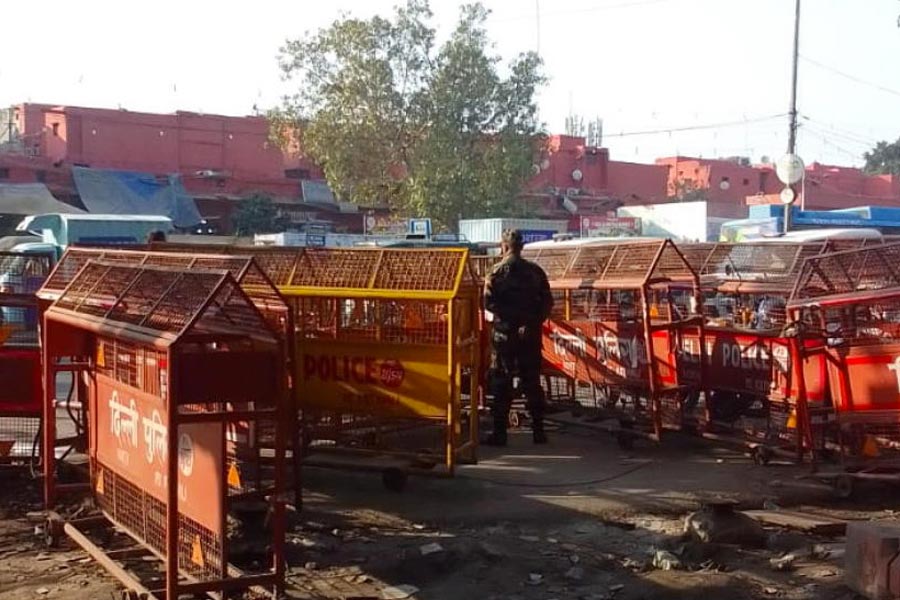 |
| Heera Shah plays his sarinda. Picture by Sanjoy Chattopadhyaya |
Heera Shah, a fakir from Murut village in Burdwan, looks like an unkempt villager in his faded dhuti panjabi. It is only when he brings out his musical instrument that one realises he is an unusual fakir.
While most fakirs sing to the accompaniment of the dotara or ektara, he uses the sarinda, a bowed lute that is the cousin of the more classically accepted sarengi, and is played across South and Central Asia. Made of reddish manasha wood, it is carved from a single trunk of wood, the stem lined with the skin of the shonabyang (bullfrog), according to Shah, who attended Baul Fakir Utsav organised recently at Shaktigarh in Jadavpur.
Believed to be rare by today’s standards, the sarinda (also known as surando, saroz and surinda), is made of a single hewed out block of wood, hollowed out at the base and tapering towards the top to form shapes like a peacock’s head, or the figures of Radha Krishna.
The sarinda has been passed on to Shah by his forefathers. “My instrument is more than 300 years old. My great grandfather Chhakan Shah Fakir received it from someone. I got it from my uncle who taught me to play it.”
Shah’s sarinda is etched on the outside with flowers and birds. The bow is made of horse hair. The music is deep and sonorous. “We had another in our family, also handed down by our forefathers but my brother gave it away,” he says.
Scholar Joep Bor in his article, “The Voice of the Sarangi”, in the National Centre for Performing Arts journal, writes that the sarinda reached its highest development in Punjab, Rajasthan, Sind, Baluchistan, Afghanistan and the eastern provinces of Iran, migrating from there to east India . An instrument called the dhodro banam, played by the Santhals of Bihar and Orissa, is believed to be a regressive cousin of the sarinda, Bor says.
Urban legend also attributes the discovery of the sarinda to Guru Arjan Singh of the Sikhs, as accompaniment to raagi music.
Shah learnt to sing at Alam Babar Majar in Dubrajpur, Birbhum. He is different from most fakirs for primarily singing songs by his own gurus, Rabbani Fakir, Baharuddin and Mansur Pir of Naldanga.
But as is the case with most folk musicians who have not come in touch with the commercial arena, he is in dire financial straits. It is ironical perhaps that musicians who have learnt their craft all their lives as a matter of course remain divorced from the material benefit that it brings.
Among sarinda players in Calcutta, there is Niranjan Haldar of folk music band Dohar. He does not have any baul or fakiri connections. Haldar would earlier sing on trains. While Shah talks of passing on his legacy to his children, Haldar’s sons are firmly entwined in the urban mesh, training as electricians and zari workers.










